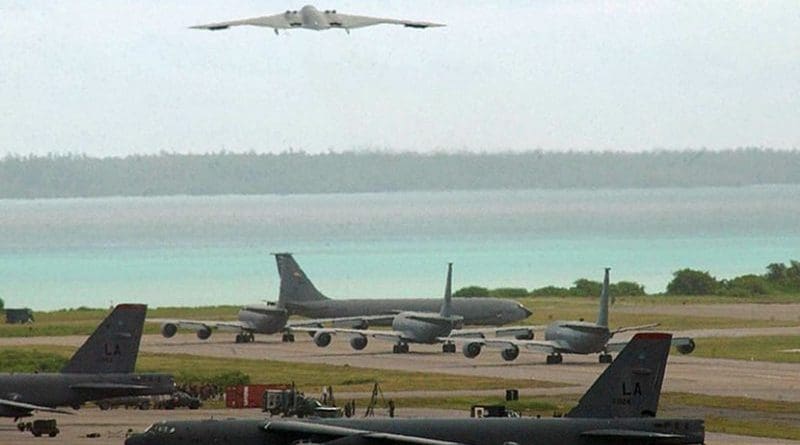The Battle For The Indian Ocean: How Submarine Cables Are Shaping US-China Rivalry – OpEd
By Greg Pence
China and the US are vying for more power and influence in the world, and their rivalry is expanding to new areas. Among these measures are installing advanced communication systems and the establishment of an internet line utilizing submarine cables on the island of Diego Garcia.
This island, which is a British territory and was leased to the US military from 1966 for 70 years until 2036, serves as one of the most vital US military bases, accommodating approximately three thousand US soldiers and their families in this region. The island of Diego Garcia is strategically important for the United States as it is located only several thousand kilometers away from India, China, and the Persian Gulf. The US can closely monitor the security of huge oil tankers and the developments in the Middle East and East Asia from this island.
Diego Garcia, which works as an unsinkable fleet for the US Navy, played a crucial role in both wars against Saddam in Iraq (1991 and 2003), and the attack on the Taliban after 9/11 (2001). This island has a radar system, a radio station, and a hydro-acoustic system that controls and communicates with the US Air Force. The island can host long-range aircraft, aircraft carriers, and nuclear submarines, giving the US a strategic advantage in any conflict in the Middle East and Southeast Asia.
The tensions between Beijing and Washington, particularly on the matter of Taiwan and its policy of containment have escalated. This renders the island of Diego Garcia more essential than ever. Recently, some documents have disclosed that the US is intending to change the internet connection of this island from satellite to submarine cables. This action can greatly increase the US military communication and readiness to address any potential threats from China or provide military assistance to Taiwan.
A top-secret operation, codenamed “Big Wave”, is underway on this island. The contractor for this operation is “SubCom”, a company that spied on Soviet submarines during the Cold War era. SubCom is one of the biggest companies that install optical fiber cables on the ocean floor for large data and telecommunication companies such as Google, Amazon, Microsoft, and Meta, but it also works exclusively for the US Army.
SubCom’s dual role has conferred a significant advantage to this company and its employer. SubCom is an affiliate of Cerberus Capital Management, an investment firm based in New York that specializes in defense and national security sectors. The firm is headed by Stephen Feinberg, a billionaire and a close associate of Donald Trump. The firm secured a shipyard in a strategic area in the South China Sea by paying $300 million to the Philippine government and overcoming Chinese competitors last year.
Big Wave and SubCom are both militarily and economically vital for the United States. From a military perspective, Washington relies on SubCom to expand its naval submarine cable network for optimal coordination of military operations and increase surveillance of China’s burgeoning fleet of submarines and warships.
With regard to economic matters, the Biden administration aims to preserve its dominant position in the global Internet by ensuring that a greater number of submarine internet cables are operated and controlled by American companies. SubCom, a company that possesses six vessels for cable installation, is crucial for this objective. SubCom formerly conducted cable installation operations for Chinese telecom companies but ceased to do so after the US Congress enacted laws to prohibit that.
The Internet connection of Diego Garcia via cable lines dates back to 2020. In that year, SubCom declared that it had obtained a contract from a wealthy Australian technology magnate to install a $300 million Internet cable from Australia to Oman in the Middle East, which would cross the Indian Ocean. The project, named the Oman Australia Cable, was initiated by SUBCO, a company located in Brisbane that invested in submarine cables. However, many specialists in this field doubted the economic viability of this project from the beginning, since Australia and the Middle East were easily connected through cables that extended to Southeast Asia. Later, it was revealed that the covert objective of this project was to connect Diego Garcia with the Pentagon, which secretly financed one-third of the cable’s route.
China’s interest in islands near Diego Garcia, a key internet cable hub for the Middle East and Australia, worries the US and UK. They fear that Mauritius, an African island state, might give some of the nearby Chagos Islands to China to pay off its debt. These developments show a US-China rivalry in the Indian Ocean, with various geopolitical and technological aspects that could threaten the region and world peace.

